For its time, Gatchaman was a very successful series. The first season (October, 1972 to Spring, 1973) saw the first series climax at episode 53, with the discovery and self-sacrifice of Ken's father. The second season, which lasted until autumn of 1974, stunned viewers with the final showdown with Berg Katse and the death of Condor Joe in episode 105. Gatchaman II was followed by Gatchaman Fighter (48 episodes) in 1979. A tiny fragment of Sosai X survives the final battle in Gatchaman II, and mutates into the ultimately nasty Sosai Z. Z recruits a half-sane megalomaniac named Count Egobossler, who is taking over the world by military force rather than by weird scientific schemes. Z backs him up with mechs and manpower, but the two villains often fence with each other. The Kagaku Ninjatai suffer through another vehicle change, acquiring the lacklusterGatchaspartan. The 'Spartan's ultimate weapon is called the Hypershoot, used in conjunction with Ken's new sword, the Gatchafencer to slice through enemy mecha in improbable-looking battle sequences. Gatchaman Fighter's art and animation quality was unsteady, but seemed an improvement over Gatchaman II. What crippled this series was its singleminded focus on Ken and the Gatchafencer, which left the other characters with nothing to do but watch the fireworks. This was undoubtedly the darkest series of the three, and the weapons and constant stalemates steadily took their toll on Ken's health and sanity. However, viewer percentages jumped when the final episodes came around: Tatsunoko was notorious for spectacular finales, and they delivered. Look for both subbed and dubbed releases of the Gatchaman OAV from Urban Vision. For reviews of the English versions, click here. Battle of the Planets ran in syndication from 1978 through the early 1980s. In the late '80s, the show was rewritten, redubbed and rerun by Turner Broadcasting as "G-Force, Guardians of Space." (Here it gets confusing: in Sandy Frank's version, the good guys were also known as G-Force.) The newer versions are more faithful in story and dialogue to the original Gatchaman, and more of the battle scenes are left in. However, the characters' new names (trite labels such as "Ace Goodheart," "Dirk Daring," "PeeWee and Hooty" and "Dr. Brighthead") were a definite handicap, and the voices, compared to those done for Battle of the Planets, were lackluster and boring. Hoyt Curtin's music was replaced by a monotonous disco pounding that filled every single gap not occupied by original soundtrack. The first run of "G-Force," in 1987, didn't net good results (probably for these reasons), but the show is currently running on Turner's Cartoon Network in the United States, and other stations worldwide. Gatchaman II and Fighter have finally reached American shores, dubbed under the series title, Saban's "Eagle Riders." There have been more name shifts, though not as bad as "G-Force." Ken is now "Hunter Harris," Nambu "Dr. Thaddeus Keane," and so forth. This series aired a short 13-episode run in the United States, but more episodes were aired in Europe. Check your local TV listings! article taken from http://www.chronicsite.com/gatchaman/introductions.htmlGATCHAMAN
October 1, 1972...
 Tokyo's Fuji Television premieres an all new action/hero series by Tatsunoko Productions. In the distant future, Earth is threatened by Gallactor, a vicious organization that combines terrorist tactics with advanced scientific knowledge in an attempt to take over the world. The only thing standing in Gallactor's way is the International Science Organization (the ISO for short) and its chief scientist, Professor Kozaburou Nambu. Dr. Nambu uses all the ISO's resources in a "war of information" against Gallactor, but his primary weapon is his pet secret project: five young people who comprise the Kagaku Ninjatai ("Science Ninja Squad").
Tokyo's Fuji Television premieres an all new action/hero series by Tatsunoko Productions. In the distant future, Earth is threatened by Gallactor, a vicious organization that combines terrorist tactics with advanced scientific knowledge in an attempt to take over the world. The only thing standing in Gallactor's way is the International Science Organization (the ISO for short) and its chief scientist, Professor Kozaburou Nambu. Dr. Nambu uses all the ISO's resources in a "war of information" against Gallactor, but his primary weapon is his pet secret project: five young people who comprise the Kagaku Ninjatai ("Science Ninja Squad").Precedents in the Genre
 Inspired by American comic book heroes, Gatchaman not only became Tatsunoko's most successful superhero show, but also set a number of precedents in the SF anime genre. It was the first to introduce the concept of a "team show," where there were five basic character types (hero, loner, big guy, token kid and female) and five colors (red, blue, pink, yellow and green), and the cooperation of all the members of a team was necessary to use their secret weapons. This was later adopted for use in the Giant Robot anime genre and the popular "spandex and latex" live-action hero shows. Compared to other anime shows of the age, Gatchaman showed a degree of realism, depicting grief and death in a way that made viewers take a good hard look at a medium previously considered "just for kids." Certain episodes were more than capable of terrifying the average seven or eight-year-old--Gatchaman's target audience.
Inspired by American comic book heroes, Gatchaman not only became Tatsunoko's most successful superhero show, but also set a number of precedents in the SF anime genre. It was the first to introduce the concept of a "team show," where there were five basic character types (hero, loner, big guy, token kid and female) and five colors (red, blue, pink, yellow and green), and the cooperation of all the members of a team was necessary to use their secret weapons. This was later adopted for use in the Giant Robot anime genre and the popular "spandex and latex" live-action hero shows. Compared to other anime shows of the age, Gatchaman showed a degree of realism, depicting grief and death in a way that made viewers take a good hard look at a medium previously considered "just for kids." Certain episodes were more than capable of terrifying the average seven or eight-year-old--Gatchaman's target audience.Followups and Sequels
The series ended, but was far from forgotten. Key episodes were compiled and released in a theatrical Gatchaman feature in July, 1978, and Bunka Hoso ran 16 episodes of aGatchaman radio program from April to September of that same year. In October of 1978, Gatchaman II (52 episodes) began. The evil alien Sosai X returns to Earth, creates a new villainess named GelSadora and tries to destroy the world with a scheme called the Solar Shift Plan. The Kagaku Ninjatai receive new vehicles and weapons, and Condor Joe is brought back as a cyborg. The stories focused on personal episodes between characters rather than the action adventure style of the original series, and retained a power of their own. Joe fans were delighted when the Condor stepped into the spotlight more often. But Gatchaman II suffered from both a staff change and "sequel disease." The result was sloppier art and animation, bleached out colors, garish, clunky mechas and cheesy background music.Gatchaman for the 90s
 Twenty years after the first series premiere, Polydor Records offered a special laser disc collection of the original Gatchaman series for the whopping price of US$1,500. The number of orders was gratifying enough that the discs were released again, separately. The anime slump of the 1990s was also responsible for a "nostalgic anime" trend, with shows like Giant Robo and Eight Man After. Tatsunoko Productions teamed up with Nippon Columbia and followed up with revivals of their classic hero shows, including a three-part Gatchaman Original Animated Video (1994). The characters and machines received a new look for the nineties, while Gallactor's motive became more credible and serious, but overall, the videos were a rehash of (and homage to) the original series.
Twenty years after the first series premiere, Polydor Records offered a special laser disc collection of the original Gatchaman series for the whopping price of US$1,500. The number of orders was gratifying enough that the discs were released again, separately. The anime slump of the 1990s was also responsible for a "nostalgic anime" trend, with shows like Giant Robo and Eight Man After. Tatsunoko Productions teamed up with Nippon Columbia and followed up with revivals of their classic hero shows, including a three-part Gatchaman Original Animated Video (1994). The characters and machines received a new look for the nineties, while Gallactor's motive became more credible and serious, but overall, the videos were a rehash of (and homage to) the original series.Gatchaman 2000 Live Action/Anime Campaign
Imagine our shock when Nippon Telegraph and Telephone (NTT) released a series of animated and live action commercials featuring a Gatchaman team with updated art and Birdstyles. A special NTT website included character writeups, downloads of the animated commercials, Flash "story" advertisements, interactive Shockwave games, and a special "Gatchaman novel" that you had to register to receive (according to those who did receive and translate the novel, it was awful--lots of yelling, grunting and posturing, but none of the action that makes Gatchaman fun). Most notable were the photos of the live action costumes and the live action TV commercials featuring the popular Japanese boy-band, SMAP (yes, this means that Jun's part was played by a guy).
Unfortunately, the site is down now, since the campaign only lasted through the month of September, 2000. The site was revived in spring of 2006 "due to popular demand" and also, possibly to check for interest in new versions of the series. The site's re-release, and surveys on the Tatsunoko web site, might be linked to the plans for a 2008 Gatchaman film feature.
Gatchaman in 2008? Maybe!
In June of 2006, Imagi Entertainment announced they had received permission from Tatsunoko to produce a new Gatchaman movie, slated for release in 2008. The movie will be done in all computer animation and released in English, directed by Kevin Munroe (who directed Imagi's 2007 release of the Teenage Mutant Ninja Turtles movie). Character, mecha and scene designs are currently in the works as well as storyboards for a teaser film. Will this movie make it to its slated 2008 premiere? Only time will tell!Gatchaman in Other Countries
 In 1978, Sandy Frank Syndication released Gatchaman as "Battle of the Planets," a show that introduced many Americans to the world of Japanese animation. In order to meet US children's programming standards, the Sandy Frank edited (some fans might say hacked, butchered, mangled, mutilated...) the episodes for violence and added a new, Star Wars style robot mascot (7-Zark-7) to narrate and fill in the gaps made by the film cuts. More cheap animation was added to show the Phoenix flying through space for space battles (all the original battles took place on good old Earth). Composer Hoyt Curtin added his music to the original Gatchaman soundtrack (done by Bob Sakuma). The character names were changed, and an all-star cast (Casey Kasem, Ronnie Schell, Janet Waldo, Keye Luke, Alan Dinehart and Alan Young) were selected to do the voices for America.
In 1978, Sandy Frank Syndication released Gatchaman as "Battle of the Planets," a show that introduced many Americans to the world of Japanese animation. In order to meet US children's programming standards, the Sandy Frank edited (some fans might say hacked, butchered, mangled, mutilated...) the episodes for violence and added a new, Star Wars style robot mascot (7-Zark-7) to narrate and fill in the gaps made by the film cuts. More cheap animation was added to show the Phoenix flying through space for space battles (all the original battles took place on good old Earth). Composer Hoyt Curtin added his music to the original Gatchaman soundtrack (done by Bob Sakuma). The character names were changed, and an all-star cast (Casey Kasem, Ronnie Schell, Janet Waldo, Keye Luke, Alan Dinehart and Alan Young) were selected to do the voices for America.
google search
10/16/2008
Diposkan oleh it`s my blog di 8:28 AM 0 komentar
here comes prince planet
Diposkan oleh it`s my blog di 8:26 AM 0 komentar
Tezuka Kids' Flicks
Diposkan oleh it`s my blog di 8:21 AM 0 komentar
Piano no Mori (Movie)
I'm guilty of slacking and not keeping my blog up-to-date. Even worse, although I had been reading a lot of manga, I left out anime, Japanese drama and movie from my routine. Whoops! So I did a little bit of catching up.
My first pick of anime to watch today was "Piano no Mori."




"Piano no Mori" tales about friendship and rivalry between two elementary school students; Kai, the trouble making prostitute son and Syuhei, the pianist family prodigy. The two boys are bonded with their love of playing piano and mysterious piano in the forest. Just as I am attracted to Nodame Cantabile, I am very much smitten with the musical aspect of Piano no Mori. I once studied the art of piano playing and I can relate to many things in the story. Even though the story is based on two boys, it is quite mature and can be enjoyed by all ages.
This movie is a nice summary of the early parts of the original manga version by Isshiki Makoto. Currently there are 16 volumes of the manga, and the movie covers up to the fifth volume. It may sound like the story had been chopped and crunched into a questionable plot like what had been done in many adaptations such as Boku Wa Imoutou ni Koi o Suru OVA. But it is not the case. I thought that it was adapted very well without leaving too many necessary details and humor. I actually enjoy the anime movie better compared to the manga, as I am able to listen to the wonderful music. I love how the anime delivers the magical feel of the piano in the forest.
I recommend this anime for classical music and light story anime enthusiast. It would be a nice anime to watch after a stressful day.
***
This scene made me laughed really hard.

The subtitle says: "Takako, just play like you're in the bathroom with Wendy."
The whole conversation is very innocent. Really. >.<>
I'm guilty of slacking and not keeping my blog up-to-date. Even worse, although I had been reading a lot of manga, I left out anime, Japanese drama and movie from my routine. Whoops! So I did a little bit of catching up.
My first pick of anime to watch today was "Piano no Mori."



"Piano no Mori" tales about friendship and rivalry between two elementary school students; Kai, the trouble making prostitute son and Syuhei, the pianist family prodigy. The two boys are bonded with their love of playing piano and mysterious piano in the forest. Just as I am attracted to Nodame Cantabile, I am very much smitten with the musical aspect of Piano no Mori. I once studied the art of piano playing and I can relate to many things in the story. Even though the story is based on two boys, it is quite mature and can be enjoyed by all ages.
This movie is a nice summary of the early parts of the original manga version by Isshiki Makoto. Currently there are 16 volumes of the manga, and the movie covers up to the fifth volume. It may sound like the story had been chopped and crunched into a questionable plot like what had been done in many adaptations such as Boku Wa Imoutou ni Koi o Suru OVA. But it is not the case. I thought that it was adapted very well without leaving too many necessary details and humor. I actually enjoy the anime movie better compared to the manga, as I am able to listen to the wonderful music. I love how the anime delivers the magical feel of the piano in the forest.
I recommend this anime for classical music and light story anime enthusiast. It would be a nice anime to watch after a stressful day.
***
This scene made me laughed really hard.
The subtitle says: "Takako, just play like you're in the bathroom with Wendy."
The whole conversation is very innocent. Really. >.<>
Diposkan oleh it`s my blog di 5:02 AM 0 komentar
It took me a second to figure out what was on cover of July 2007 Newtype. "Is X coming out again?" I soon figured out that it was actually Code Geass. What a treat! I really love this style of CLAMP artwork. I feel like Code Geass is a dimension of the CLAMP universe and Mokona is going to show up at any moment. Clamp has been drawing Code Geass characters in a couple of different styles.Code Geas Character Design by CLAMP
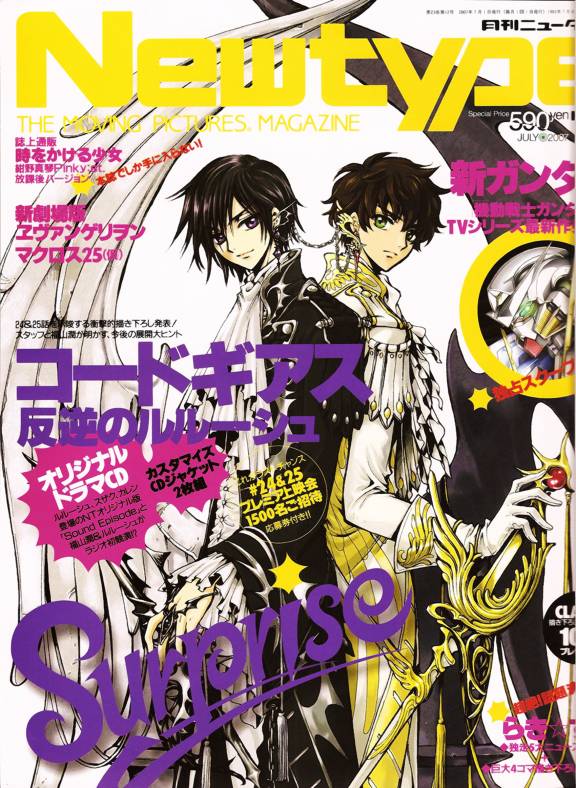
Code Geass Classic CLAMP Style
Other CLAMP Artworks With Similar Style
(All of these series are connected as each other's parallel universe.)
Magic Knight Rayearth 
Tsubasa RESERVOIR Chronicle 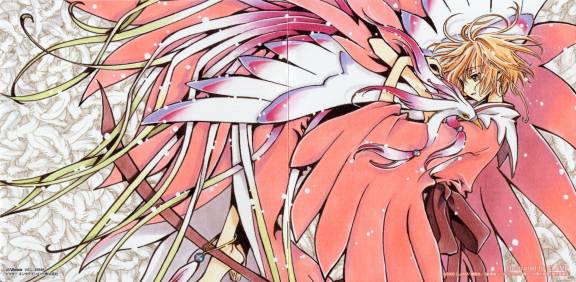
Tsubasa RESERVOIR Chronicle 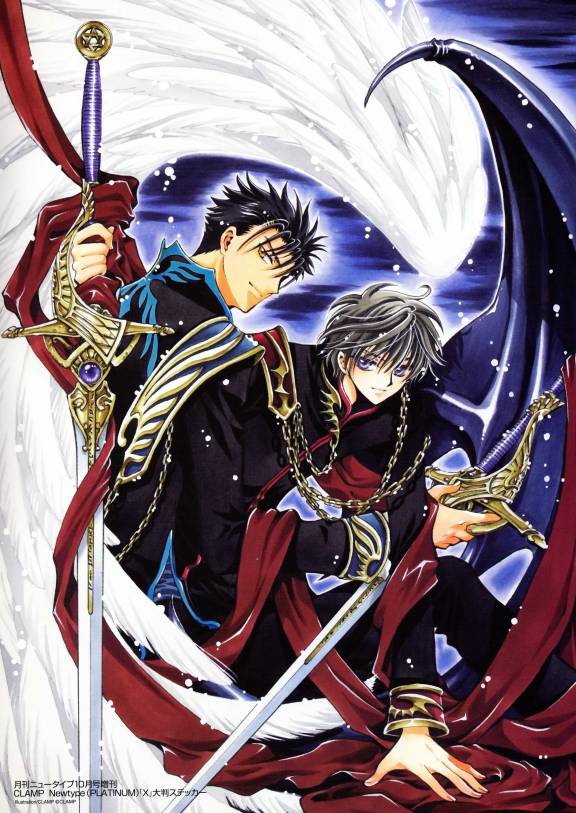
X 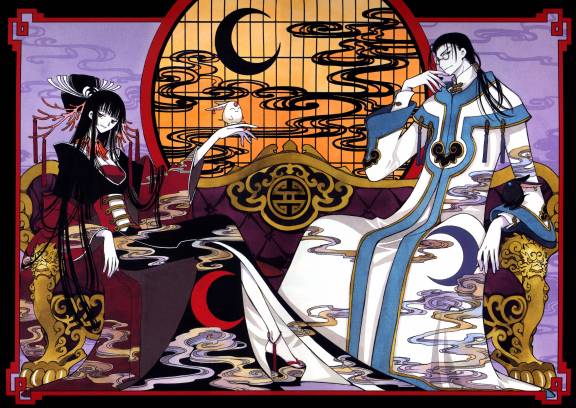
xxxHolic
Variety of Code Geass Illustration Styles
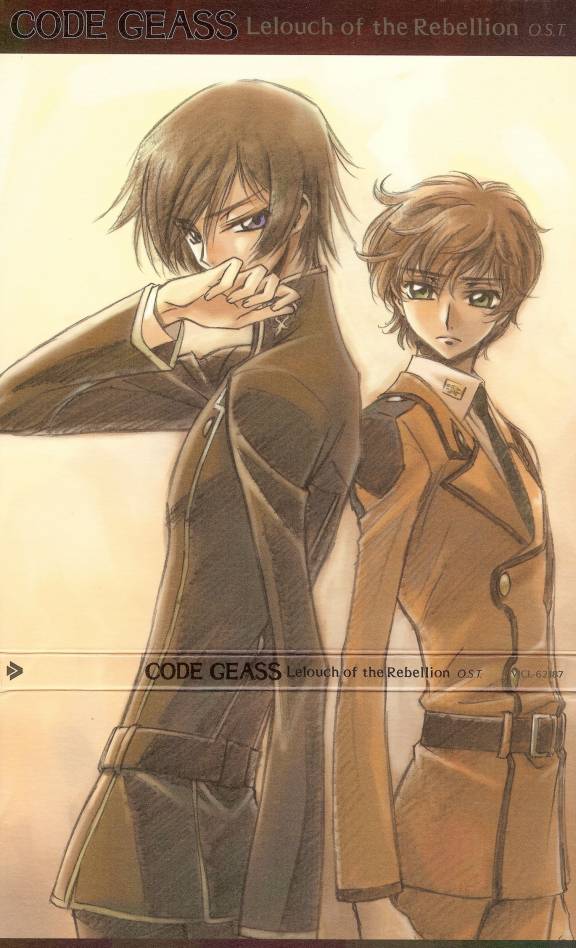
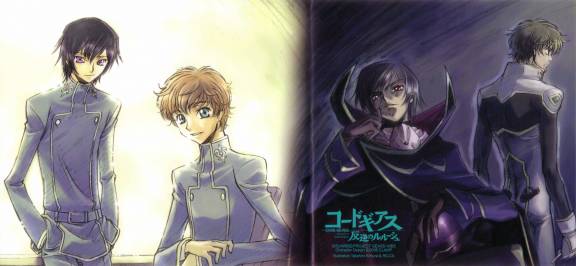
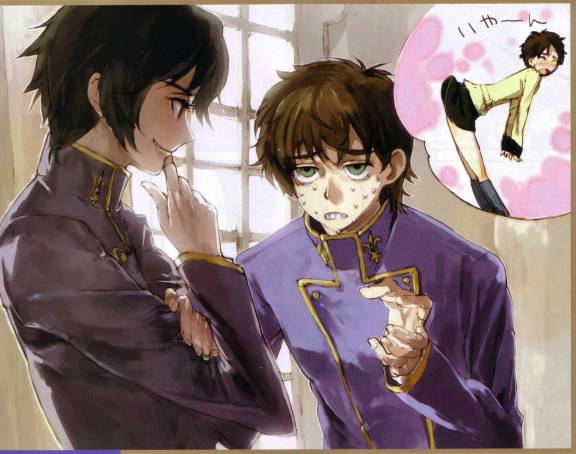
copyrighted by http://otakuhime.blogspot.com/2007/06/code-geas-character-design-by-clamp.html
Diposkan oleh it`s my blog di 5:00 AM 1 komentar
9/30/2008
Happy Tanabata day, the star lovers festival
Posted by animewriter underWell, I would like to wish a happy Tanabata day to all the people of Japanese and Chinese descent, and lovers of Asian culture. The Tanabata festival is also know as the Star Lovers festival, the Star Weaver festival, or the Star festival. This Japanese festival owes it’s roots to the Chinese legend of the meeting of the stars Vega and Altair, and this festival is celebrated on the 7th day of the 7th month, this day can vary according to which calendar (lunar or Gregorian) the city, town or village follows.
The Tanabata festival has always been one of my favorite Asian festivals, I once had the pleasure of actually being in Japan for the Tanabata festival in 1987, and what an enjoyable sight it was, I only wished that at the time I was more interested in taking some pictures rather than chasing some tail, oh well, to be young again.
There are many versions of the Tanabata legend and below I will write a small summary of my favorite version of the story.
The god of Firmament who lived in the High Plain of Heaven had a very beautiful daughter named Tanabata, and it was her duty to spend her time weaving garments for her father. One day while at her loom she spied a handsome lad named Hikoboshi leading an ox, and she at once fell in love with the lad. Her father knowing his daughter’s thoughts immediately consented to her marriage.
But, they loved well but not wisely, Tanabata neglected her weaving duties to her father, and Hikoboshi let is oxen wander unattended across the High Plain of Heaven, greatly angering the God of Firmament. He commanded that the lover be separated from one another by the Celestial River.
The separated lovers’ grief was so great that soon the God of Firmament consented to allow the lovers to meet one night a year to sooth their loneliness. So on the seventh night of the seventh month the lovers come to the banks of the Celestial River and wait for a company of Magpies to form a bridge so the lover can finally be together. It is said that if the weather is good and the Star Lovers meet that one can look up into the night sky and see the stars Vega (Tanabata) and Altair (Hikoboshi) shine with the colors blue, green, red, yellow, and white.
Now this only happens if the weather is good, if there is rain then the Celestial River might become too wide for even the Magpies to span, and then the weary lovers will have to wait another year to meet. In times past, young children would sing “oh, weather, be clear” before the Weaving festival.
Now, Tanabata is celebrated by people placing fresh cut bamboos on the roofs of their houses or placing them in the ground next to their houses. They attach strips of colored paper containing poems or praises to the lovers to the bamboos, these strips of paper also contain wishes for good crop harvests, good grades, good health, good wealth, and even romance.
On the night of Tanabata, Japanese people can go out in casual clothing or in more traditional clothing such as Yukatas. While each town celebrates the festival differently, the most common events are goldfish scooping, karaoke singing, sumo contests, food booths, fireworks, and boat rides if near water.
Below are some anime related pictures.
copyrighted
http://animewriter.wordpress.com/category/myths-and-legends/
Diposkan oleh it`s my blog di 7:00 AM 0 komentar
Telepathy Shojo Ran 10 review, fireworks and friendship.
Posted by animewriter under Adventure, Drama, Supernatural, Telepathy Shojo Ran | Tags: anime, anime adventure, Anime Series, anime supernatural, Telepathy Shojo Ran |No Comments
This episode begins with Ran running into Midori along the beach, and they talk about summer break and tonight’s firework display. Ran is excited about the display because last year she had to go with Rin but now she has a boyfriend, Midori wants to go with Rin, but Ran tells her he has Judo practice then he’s going to the fireworks with a friend. Midori gets upset at Ran because she won’t say if Rin’s friend is a boy or girl, but finally Ran tells her it’s a guy so she still has hope.
Just as they are about to separate, Ran invites Midori to go to the fireworks with her and Rui but she says no thanks, then Ran invites Midori to breakfast but she refuses, poor Midori, she missed out on a home cooked meal by Rin. After the meal Ran gets ready for the fireworks and then she and Rui agree on the time and place where they’ll meet for the fireworks.
Then we see Midori practicing the violin at her place, as she’s playing she has flashbacks of the bad time when she was rejected by her mother and others. But, she’s says that she hasn’t been having those thoughts lately and she chalks it up to her friendship with Ran, and after a while Midori steps out to grab a bite to eat.
As Ran and Rui are out shopping they try to call Midori many times but she’s out too, Midori seems a little lonely by herself. Midori is cheered up when she hears Ran’s messages when she gets home. Later when Rui stops by to pickup Ran they again try calling Midori but they only get her answering machine.
Ran and Rui head to the fireworks and Midori feeling kind of lonely heads down to the waterfront too. As the fireworks begin Ran and Rui are enjoying the show and Midori begins to walk through the crowd. Midori is starting to feel lost and surrounded by the crowd of people she doesn’t know, then Ran manages to locate her and then they enjoy the show together. In the end everyone enjoys the fireworks with either family or friends. Well, that’s all for this episode.
Well, this was a pretty mellow episode of TSR with a summer festival being the backdrop for the story. At first glance, one might think that this episode was about Ran and Rui going out on a date together but you would be wrong. While this episode included many ongoing themes, Ran trying to get some alone time with Rui, Midori wanting to get closer to Rin, or Midori’s cocky and sassy nature, but the heart of this episode was how deeply Ran’s friendship has affected Midori in many ways.
When Midori and Ran first meet, Midori was a deeply lonely and bitter girl, she basically thought that she could never be normal or never have normal relationships. So, she disdained trying to interact with regular people out of fear of getting hurt and rejected. But, as time passed, Ran’s friendship with Midori has lead her to want normal human interaction. Through Ran, Midori has meet people who were willing to accept her for who she is and she feels comfortable around them because she doesn’t fear being hurt.
Midori now wants or at least deep down needs to be a normal girl who would like things that normal girls would want; to feel cute and beautiful, have friends, and even want a little romance and love with Ran’s brother. I really hope that Midori can find a little peace, joy, and love, because she had so little of it as a child.
copyrighted by
http://animewriter.wordpress.com/2008/09/page/4/
Diposkan oleh it`s my blog di 6:49 AM 0 komentar


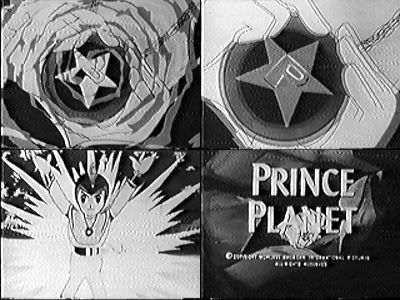

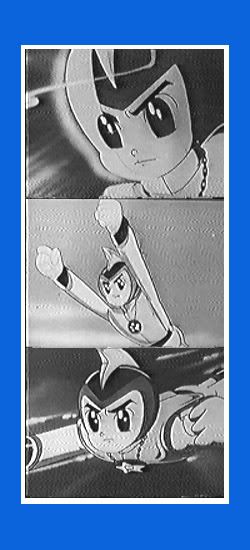



![Astro Boy [Original]](http://www.qag.qld.gov.au/__data/assets/image/0005/37535/varieties/Thumbnail.jpg)
![Astro Boy [Remake]](http://www.qag.qld.gov.au/__data/assets/image/0003/37533/varieties/Thumbnail.jpg)








































